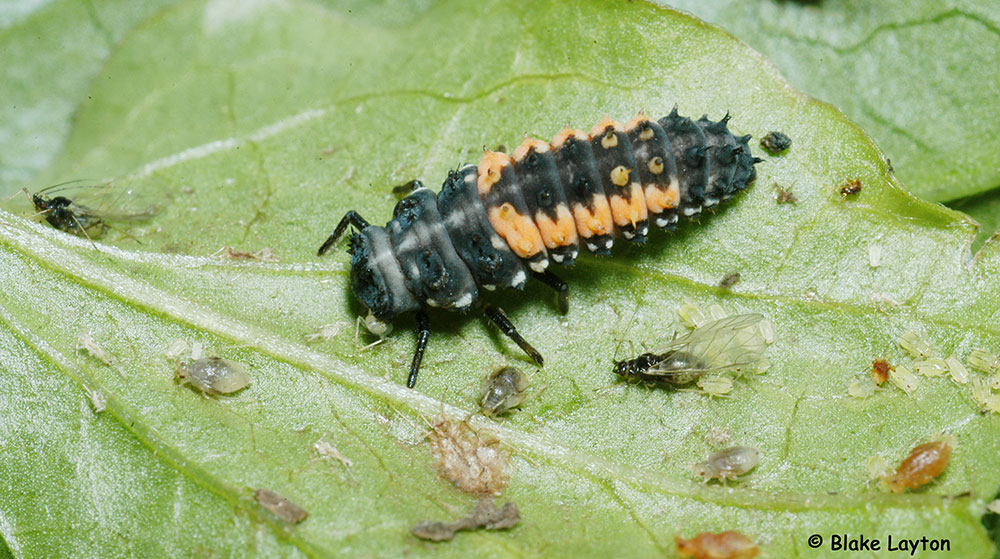Multicolored Asian Lady Beetle, Larva Vol. 2, No. 14
Related News
September 10, 2013
June 24, 2013
June 20, 2013
April 11, 2013

Order: Coleoptera
Family: Coccinellidae
Lady beetle larvae don’t have spots, and they are not shaped like a Volkswagen beetle, but they are still voracious predators of aphids and other soft-bodied insects. If you encounter a heavy infestation of aphids this summer, look carefully and you will probably see several lady beetles, both larvae and adults, in the area.
Multicolored Asian lady beetles are not native to the U.S, but over the past several decades, they have become well-established throughout most of the country, and here in the southeast, they are one of our most abundant lady beetle species. During the summer months this is a good thing, as they play a key role in helping control populations of serious pests such as aphids, whiteflies, and scale insects.
But in the fall and winter, this beneficial insect can become a real pest. Around Halloween, give or take a few weeks, adult multicolored Asian Lady beetles begin looking for a warm dry place to spend the winter. They are especially attracted to light-colored buildings, and buildings that are not properly sealed can become host to thousands of overwintering lady beetles as they enter through cracks and crevices. If you were plagued by this problem last year, now is the time to take steps to prevent lady beetles and other insects from being able to get into your home again this fall.
See Bug Wise Newsletter No. 7 of 2014, Physical Exclusion: The Best Treatment for Home-Invading Insect Pests, for information on how to keep lady beetles and other home-invading insects from getting into your home or building this fall.
Let others know about the Bug’s Eye View Newsletter: If you know someone who might enjoy receiving the Bug’s Eye View Newsletter, please share. They can easily subscribe by clicking on the sign up link shown below.
Blake Layton, Extension Entomology Specialist, Mississippi State University Extension Service.
The information given here is for educational purposes only. Always read and follow current label directions. Specific commercial products are mentioned as examples only and reference to specific products or trade names is made with the understanding that no discrimination is intended to other products that may also be suitable and appropriately labeled.